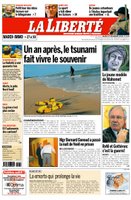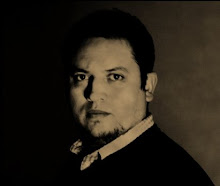Samarra: an Islamic archeological site under fire
A note was sent yesterday (through the H-Islamart mail list) by Professor Alastair Northedge, who is co-directing an archeological project in the Iraqi city of Samarra... I already posted a note about this project and the importance of this site... Samarra's monuments including the Malwiyya became part of the war scene... and, therefore, another casuality of the war in Iraq...
Northedge's note is published here along with the Washington Post's article that she's referring to:
A new article in the Washington Post on December 25th brings us up to date on the situation at Samarra. According to this article, "On July 26, Walsh was riding with a patrol down the main street past the spiral minaret ... Not long before, the Antiquities Ministry had required him to remove his sniper team from the minaret, making it more difficult to prevent insurgents from planting bombs in the streets below."The author confirms what I wrote in September, and says "In late August, Army engineers used bulldozers to build an eight-foot-high, 6 1/2-mile-long dirt wall around the city, threatening to kill anyone who tried to cross it."We do not yet have satellite imagery to show the precise alignment of the berm, but the fact that it cuts through the archaeological area both north of the spiral minaret, and south of the limits of the modern city is self-evident. The quantity of earth bulldozed from the remains to construct the berm is not difficult to calculate, and must necessarily have damaged a wide area.
...........................................
U.S. Seeks To Escape Brutal Cycle In Iraqi City
3rd Try at Pullout Depends on Police
By Ann Scott TysonWashington Post Staff WriterMonday, December 26, 2005; Page A01
SAMARRA, Iraq -- On one of his last days in Iraq, Sgt. Dale Evans looked out over the turbulent city from a rooftop tower piled high with sandbags, manning a machine gun. Below him, rows of Bradley Fighting Vehicles stood at the ready. Dusty streets were lined with coiled barbed wire and abandoned houses pockmarked from gunfire -- a protective no-man's land around a base that U.S. commanders describe as their "battleship" in downtown Samarra.
This month, Evans and his company from the 3rd Battalion, 69th Armor Regiment, will leave Patrol Base Uvanni, beginning a third attempt in as many years by U.S. forces to hand this Sunni city over to Iraqi police. It's a major test for the U.S. military in Iraq, and one U.S. commanders here say they can't afford to fail.
Since 2003, Samarra has come to symbolize the trials and errors of U.S. strategy in Iraq -- a cycle of military offensives, lulls and new waves of lethal insurgent attacks.
In recent months, U.S. forces have resorted to draconian tactics to try to drive insurgents from Samarra and keep them out. In late August, Army engineers used bulldozers to build an eight-foot-high, 6 1/2-mile-long dirt wall around the city, threatening to kill anyone who tried to cross it. Entry into Samarra was limited to three checkpoints. Since then, attacks have fallen sharply, and voter turnout was high for the Dec. 15 national elections.
But no one here is sure the relative calm will last. The military received reports that at least one local election worker was killed last week.
One of the toughest challenges the U.S. military faces in Samarra and other Sunni cities is building local police forces, a top priority for the U.S. command in Iraq in 2006. Homegrown police are vital to fighting an insurgency, military experts agree; they know the tribes, neighborhoods and back alleys. But for the same reason, they and their families are highly vulnerable to insurgent threats. In Samarra, 10 police officers have been assassinated in recent months. About 800 policemen are on the payroll, but only 100 to 150 show up for work, according to their American trainers.
At Patrol Base Uvanni, a three-story school surrounded by concrete barricades, Evans, 35, of San Antonio, said that as the U.S. military recruits police, insurgents are recruiting, too. A day before, the base was rattled by insurgent mortars -- a regular event. Evans's advice for the far smaller contingent of U.S. troops that is coming to Samarra: "Watch your backside. It's kind of rough."
Sixty-five miles north of Baghdad, on a bend of the Tigris River, Samarra was troubled even under the government of Saddam Hussein. Founded in the 9th century as a base for the Abbassid army, the city became best known for its spiral minaret, markets and -- in recent years -- crime. Things grew so bad that Hussein built a bypass around Samarra on Highway 1, Iraq's main north-south artery.
"There were a bunch of ruffians extorting money from travelers," said Capt. Rich Germann, a military intelligence officer with the 3rd Battalion, based in Samarra. Today, the insurgency in Samarra also has a strong criminal element, Germann says.
After the U.S. invasion of Iraq in 2003, successive military offensives brought only short-lived security to the city of 200,000, which repeatedly fell back into the grip of insurgents. Local police were killed, fled or simply walked off the job. Following the last U.S. military sweep into the city, in October 2004, U.S. troops built several small police outposts inside the city using trailers barricaded by cement slabs. Those, too, failed.
"They created a police station in a box," said Maj. Patrick Walsh, the operations officer for the battalion, part of the 3rd Infantry Division. "There were too many out there. Insurgents overran them, and police died."
When Walsh's battalion took over Samarra in February, the city had "zero" police, he said, apart from a sergeant guarding an armory of 20 rifles and small contingents at the hospital and Golden Mosque. Officials said the Iraqi Interior Ministry sent two battalions of Special Police commandos from Baghdad to help quell the violence, and attacks dropped off from dozens each week to less than two a day. But last spring, half the commandos were pulled out on another mission, and violence quickly escalated.
On May 23, insurgents launched an all-out assault on Patrol Base Uvanni. Three mortar shells pounded the base, followed by two cars packed with explosives that crashed into the outer wall, blowing it up and knocking down a barrier. Then two suicide bombers rushed toward the breach but were shot down by soldiers on the school roof.
"I had just woke up and saw dust all over," recalled Spec. Tony Ngo, 20, of San Jose, Calif., whose platoon rushed out to reinforce the guards. It was one of repeated attacks on Uvanni in which insurgents tried to "ambush us from all corners," including with machine-gun fire and rocket-propelled grenades, Ngo said.
By July, Samarra was clearly "starting to slip," Walsh said. "It was a neutral-to-bad news story."
On July 26, Walsh was riding with a patrol down the main street past the spiral minaret headed to Uvanni. Not long before, the Antiquities Ministry had required him to remove his sniper team from the minaret, making it more difficult to prevent insurgents from planting bombs in the streets below. Suddenly, a Humvee in the convoy was blown up by a buried 155mm artillery round, detonating the fuel tank and setting it on fire. Walsh managed to pull one soldier from the blazing vehicle, but it was too late for another, who burned to death.
"I got mad," said Walsh, of South Bend, Ind. Over the course of three weeks, six battalion soldiers died in attacks. "That was the catalyst," he said, for what was called Operation Great Wall.
Using bulldozers and armored earthmovers, Army engineers encircled Samarra with a wall of dirt, sealing off the many small roads that insurgents used to move weapons into the city. Signs warned that anyone trying to cross the berm would be met with deadly force -- and some were, according to battalion officers.
The wall sent a panic through Samarra that a major offensive was imminent. "We helped spread that rumor," Walsh explained, "to get people to leave, so citizens of Samarra would be more inclined to give up the insurgents. Cooperate, or we'll clear the city." Tens of thousands fled, reducing Samarra's population to about 70,000. Half the working police force quit.
Meanwhile, in a change of tactics, soldiers began taking up unpredictable, covert positions in houses and abandoned buildings. "We got more sneaky," said 1st Lt. Adam Hurley, 24, of Raleigh, N.C., whose soldiers shot insurgents as they were placing artillery rounds in freshly dug holes.
"We had to do some deep-seated military operations," Walsh said. "We had to take a step back versus going forward. We took one step back, instead of destroying the city."
After Samarra was walled in, attacks in the city dropped sharply, from seven or eight a day last summer to one or two now, according to the military. Since October, only one roadside bomb has exploded on the main portion of highway running past Samarra, and there has been only one car bomb, in contrast with two or three a month previously.
The security has come with a cost. Long lines of vehicles sit idle at the city's three checkpoints, where crossing can take as long as an hour. "It completely disrupted the city market," said Hurley, adding that farmers especially suffered. While thousands of residents have returned to the city, the population is still down by about a fourth from a year ago.
Now, the U.S. military is embarking on a gradual plan to cut its forces and pull out of the city -- a plan that ultimately depends on a local police force that trainers say is undermanned and years away from being up to the task.
In a new police headquarters in Samarra's barricaded government Green Zone, a block from the old one that was gutted by insurgent bombs, a few police officers sat around on the roof. Only one sits in a guard tower, his hands folded on his lap. Beds with blankets were situated under an awning, and Islamic prayers wafted from a cassette player.
Two battalions of special police commandos returned to Samarra from Baghdad in December to bolster the local police but plan only a short stay. "Right now the police are capable of defending themselves," the commandos' chief, Col. Bashar Abdullah Hussein, asserted between cell phone calls in his office. The commandos will be in Samarra "not more than three months," he said.
But Capt. Barry Humphrey, who trains local police, says the vast majority of policemen don't come to work, and those who do often put in only a few hours. Several hundred idle police are on the payroll under a patronage system tolerated by the current police chief.
"The biggest problem we have so far is accountability of people," said Humphrey, 30, of Montgomery, Ala. With competent leaders, he estimated it will take two years to generate the planned local police force of 1,200 men.
On a foot patrol Dec. 2 in a violent part of Samarra called Abu Bas, Humphrey was with a police patrol when two men in black robes and head scarves flew around the corner and opened fire. They shot one policeman in the forehead and shoulder. But instead of taking cover, five police officers went forward in pursuit. Ultimately, the attackers were caught trying to escape through a checkpoint. To Humphrey, it was a small step forward.
"This time," he said, "some of them did shoot back."









